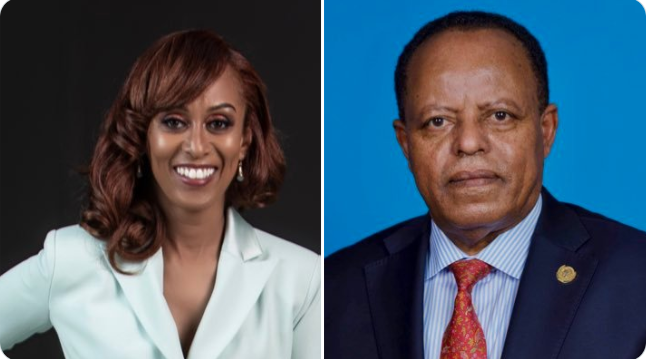LJDemissie
In the heart of Ethiopia’s digital landscape, government officials, ministers, ambassadors, and diplomats wield the power of social media. Their personal accounts serve as conduits for official communication, bridging the gap between governance and the public. But behind the scenes lies a tangled web—a mixed bag of data that holds both promise and peril. Let’s unravel this enigma and explore why Ethiopia struggles to maintain control over its digital assets.

Ethiopia’s Social Media Puzzle: A Mix of Facts and Fun
Imagine a giant jigsaw puzzle spread across different websites and apps. Ethiopia’s government officials play a key role in this puzzle. As they change jobs, they keep their social media accounts. These accounts hold important stuff—like decisions they make, messages they share, and even funny cat pictures! But here’s the twist: these accounts are a bit messy. They mix official business with personal thoughts.
For instance, let’s meet Foreign Minister Taye Atske Selassie. He uses his personal Twitter account, @TayeAtske, for official work. But guess what? When he was Ethiopia’s Ambassador to the UN at New York, he used the same account for official stuff too. It’s like having a backpack that holds both schoolbooks and snacks!
And there’s more! Prime Minister Abiy Ahmed’s spokesperson, Billene Aster Seyoum, also relies on her personal Twitter account, @BilleneSeyoum, for official purposes. Former Minister of Health, Lia Tadesse, did the same with her account, @lia_tadesse. Even after leaving her post, Lia retained the data. Now, as the Executive Director of the Harvard Ministerial Leadership Program, she continues using her personal Twitter account.
As the Ethiopian government marches toward artificial intelligence (AI), these digital footprints become valuable assets. The data—whether it’s a minister’s eloquent speech or an ambassador’s travel itinerary—feeds hungry algorithms. AI thrives on patterns, context, and diversity. It learns from the mundane and the extraordinary alike.
So, next time you see a tweet or a Facebook post from an Ethiopian official, remember: it’s not just words—it’s part of a big puzzle that helps Ethiopia move forward!
The Data Dilemma
Yet, Ethiopia faces a paradox. While it aspires to harness AI’s transformative power, it grapples with data sprawl. Who controls this trove of information? Who safeguards it from cyber threats and misuse? The answer remains elusive.
Imagine a librarian overwhelmed by a chaotic library. Books are stacked haphazardly, and the card catalog is missing. The Ethiopian government, too, lacks a comprehensive strategy. Security protocols falter, privacy breaches occur, and valuable insights slip through the cracks.
Charting a Course
So, what’s the solution? Ethiopia must chart a course—a digital compass that points toward data governance. Here are the waypoints:
Centralization: Establish a unified platform where official communications reside. Imagine a digital embassy—a secure space where ministers’ tweets and diplomats’ Instagram stories coexist harmoniously.
Education: Teach officials about responsible data stewardship. It’s not just about posting selfies; it’s about safeguarding national interests. Perhaps a crash course in “Data 101” is in order.
Collaboration: Involve tech experts, legal minds, and ethical hackers. Together, they can build robust systems, update security certificates, and ensure data sovereignty.
Remember, in this digital age, data is gold. Handle it with care, Ethiopia—it’s your ticket to the future.
The writer, LJDemissie, who received assistance from AI technology developed by OpenAI, can be reached at LJDemissie@yahoo.com or on Twitter at @LJDEmissie.
